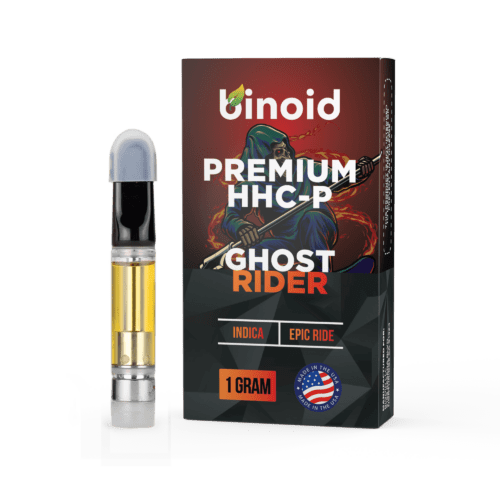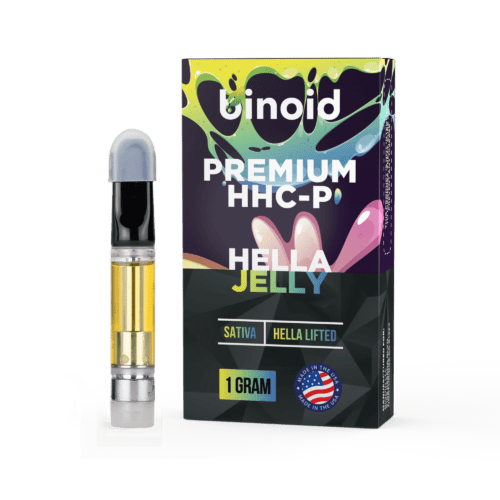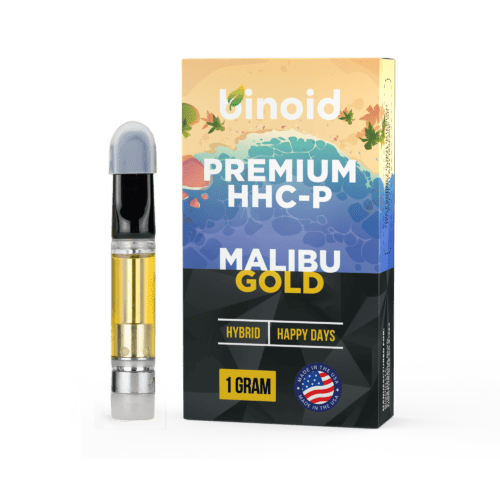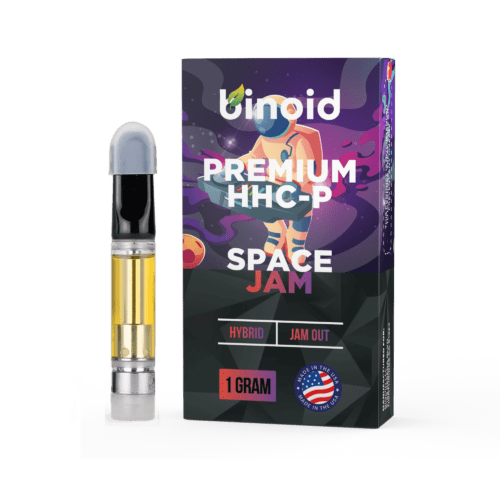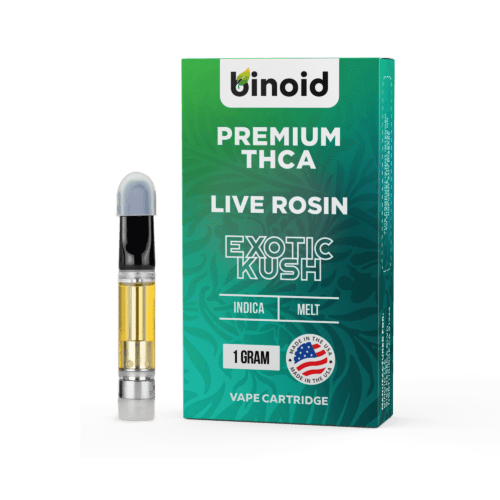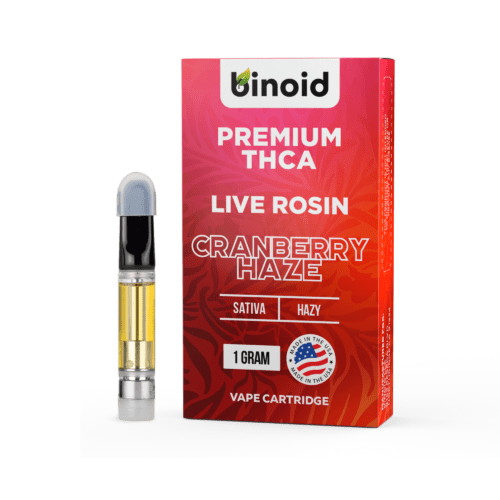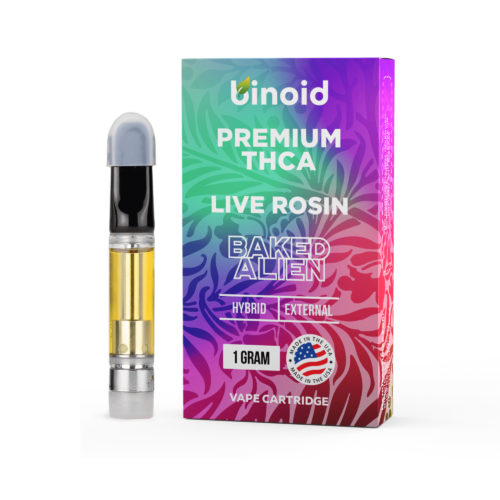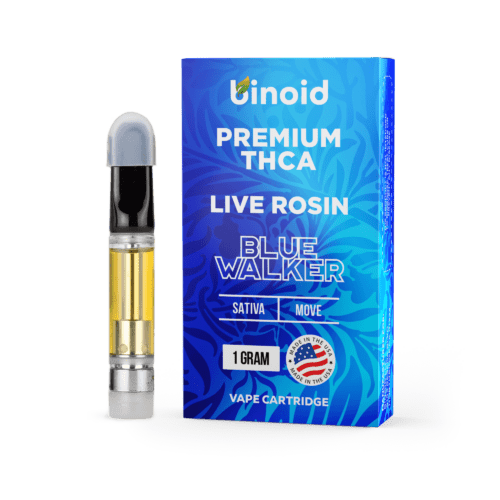The ongoing exploration into the vast chemical library of the hemp plant has led us to a fascinating crossroads, a point where human ingenuity and natural potential spectacularly collide. The modern market is no longer just about offering alternatives; it is about providing a curated selection of experiences that cater to every level of tolerance and every imaginable desire. It is here, at this intersection of science and nature, that the vape cartridge has become the indispensable tool for the modern connoisseur, delivering the pure essence of these compounds with unmatched efficiency.
This landscape sets the stage for a truly epic confrontation between two titans of potency, each representing a different philosophy of power. This is a deep dive into the world of engineered intensity versus unlocked authenticity: HHC-P vape cartridges vs. THCA vape cartridges.
To Buy Cannabinoid Vape Cartridges Click Here
Recommended products
What are Cannabinoids?
To fully appreciate the profound differences and unique attributes of the HHC-P and THCA rivalry, it is essential to first establish a firm understanding of their foundational classification: cannabinoids. At the most fundamental level, cannabinoids represent a diverse group of chemical compounds that are defined by their ability to interact with the cannabinoid receptors within the cells of the human body. These interactions are the very engine that drives the wide spectrum of effects associated with the cannabis plant, though the origins of these molecules are not confined to botanical sources.
Scientists generally classify these compounds into three distinct categories: phytocannabinoids, which are synthesized by plants (with Cannabis sativa being the most famous producer); endocannabinoids, which are produced naturally inside the bodies of humans and other vertebrate animals; and synthetic cannabinoids, which are engineered artificially within a laboratory environment. Phytocannabinoids like THCA and synthetically modified derivatives like HHC-P possess specific molecular shapes that allow them to bind with our body’s internal systems, initiating a cascade of physiological responses that can shape everything from our mood to our sensory perception.
The mechanism behind these interactions is the endocannabinoid system (ECS), a magnificent and intricate cell-signaling network that serves as a master regulator for maintaining the body’s internal equilibrium, a state known as homeostasis. The ECS is built upon three core pillars: the endocannabinoids themselves (such as anandamide, often called the “bliss molecule”); the receptors these molecules bind to (primarily the CB1 receptors concentrated in the central nervous system and the CB2 receptors found in the peripheral nervous and immune systems); and the metabolic enzymes that create and break down the endocannabinoids after their signaling task is complete.
Phytocannabinoids and their analogues can produce their remarkable effects precisely because their molecular structures can mimic our natural endocannabinoids, allowing them to bind to and activate these same receptors. The unique profile of effects for any given cannabinoid is dictated by the precise nature of this bond—its strength (or binding affinity), the specific receptor it targets, and its shape.
Within the vast botanical library of more than a hundred identified phytocannabinoids, a critical distinction exists between major and minor compounds. Major cannabinoids, including the well-known cannabidiol (CBD) and Delta 9 THC, are the most prevalent and have been the focus of scientific inquiry for many decades. They are found in substantial concentrations within the raw cannabis plant, which makes their direct extraction a relatively simple and commercially scalable process.
In stark contrast, minor cannabinoids are present in exceedingly small, often trace, quantities, sometimes constituting less than one percent of the plant’s total cannabinoid content. Many of the most popular cannabinoids on the modern market fall into this category. Their natural scarcity makes direct extraction economically unfeasible, necessitating their creation through sophisticated laboratory processes, where a more plentiful cannabinoid like CBD is chemically transformed into these rarer isomers.
This dynamic between major, minor, and synthetically altered cannabinoids is the bedrock of the modern hemp industry. The passage of the 2018 Farm Bill was a watershed moment, as this federal legislation legalized hemp and all its derivatives, provided they contain no more than 0.3% Delta 9 THC by dry weight. This legal framework, while sharply focused on limiting access to Delta 9 THC, inadvertently opened a vast and legal pathway for the commercialization of other cannabinoids, including both minor isomers and compounds like THCA, which exist as a legal precursor.
This legal opportunity, supercharged by tremendous progress in chemical conversion, purification, and extraction technologies, has fueled the meteoric rise of products centered around a diverse array of cannabinoids. As a direct result, consumers are now empowered with an unprecedented selection of experiences, allowing them to move beyond conventional options and into a more sophisticated realm where they can choose specific compounds to perfectly match their desired outcomes.
Recommended products
What are Cannabinoid-Infused Vape Cartridges and How are They Typically Created?
Cannabinoid-infused vape cartridges, often simply called “vape carts,” are small, pre-filled containers that hold a liquid formulation of purified cannabinoid distillate and, typically, aromatic terpenes. These self-contained units are meticulously engineered to attach to a compatible battery, commonly known as a vape pen or 510-thread battery, which provides the necessary electrical power to heat the liquid and instantaneously transform it into an inhalable vapor. The primary function of a vape cartridge is to offer a convenient, discreet, and highly efficient method for consuming cannabinoids.
Unlike other consumption methods that require more preparation or have a significantly delayed onset, such as edibles, vaping allows for the rapid delivery of the active compounds directly into the bloodstream through the vast surface area of the lungs. This results in effects that can be felt almost immediately, often within a matter of minutes, providing users with unparalleled control over their experience as they can take small draws and precisely gauge the effects before deciding to continue.
The marketplace for cannabinoid vape cartridges is incredibly diverse, with products available in a multitude of shapes, sizes, and materials designed to suit various consumer preferences and accommodate ongoing technological advancements. The most ubiquitous size is the 1-gram (or 1mL) cartridge, which offers a substantial amount of oil that serves as a happy medium for both regular and occasional users. However, smaller half-gram options remain popular for those wishing to sample a new strain, while larger 2-gram, 3-gram, and even 5-gram disposable vape pens have emerged for users seeking maximum convenience and longevity. In terms of shape, the classic cylindrical design with a 510-thread connection remains the undisputed industry standard due to its near-universal compatibility with the vast majority of batteries.
Yet, some brands have pioneered proprietary pod-style systems that often feature a sleeker, more modern aesthetic and a magnetic connection, although they require a specific, brand-locked device to function. The materials used in cartridge construction are also a key differentiator, profoundly impacting performance, safety, and the purity of the user experience, with a clear hierarchy from basic plastics to premium glass and ceramic constructions.
While external designs may vary, the core components of a standard vape cartridge are universal and work in precise concert to deliver a smooth, flavorful, and consistent experience. Each part plays a critical, non-negotiable role in the device’s function, from the point of contact with the user to the electrical connection with the power source. A detailed breakdown reveals the intricate design that ensures safety and proper function:
Mouthpiece: This is the uppermost part of the cartridge through which the user inhales the vapor. Mouthpieces are crafted from a variety of materials, including common options like plastic, more premium choices like heat-resistant ceramic, and stylish alternatives like metal or wood. The shape can also differ—flat, rounded, or ergonomically contoured (“duckbill”)—to enhance comfort. The material choice is not merely aesthetic; ceramic mouthpieces, for instance, are excellent at dissipating heat, ensuring a cooler and more comfortable draw.
Tank/Reservoir (Chamber): The tank is the main body of the cartridge that holds the precious cannabinoid-infused oil. It must be transparent to allow the user to monitor the remaining liquid. While some budget cartridges may use polycarbonate plastic, high-quality tanks are almost exclusively made from borosilicate glass. This type of glass is highly durable and, most importantly, non-reactive, ensuring that there is no chemical leaching into the oil, which could alter the flavor and compromise the purity of the terpenes and cannabinoids.
Atomizer/Heating Element: The atomizer is the functional heart of the cartridge, responsible for heating the oil to its precise vaporization point (typically between 300-400°F). It consists of a heating coil wrapped around or embedded within a wicking material that draws in the oil. In modern, high-end cartridges, the atomizer core is made of a porous ceramic. This technology, often referred to by brand names like CCELL, provides exceptionally even heat distribution and a larger surface area, which prevents direct contact between the hot coil and the oil. This indirect heating is crucial for preventing burning, which would create a harsh taste and potentially harmful byproducts, and for preserving the delicate and complex flavor profile of the terpenes.
Base/Connector: The base is the bottom part of the cartridge that houses the atomizer and features the threading used to connect the device to a battery. The most common type is the 510-thread (referring to the 10 threads at 0.5 mm per thread), which has become the universal standard, ensuring interoperability between most cartridges and batteries on the market. The base also contains the airflow intakes—small holes that allow air to enter and mix with the vapor—and the electrical connection point that draws power from the battery to activate the heating element when the user inhales or presses a button.
The production of a cannabinoid-infused vape cartridge is a meticulous, multi-stage process that merges precision manufacturing with sophisticated chemical science to ensure a safe, effective, and enjoyable final product. This complex journey can be broken down into three distinct parts: the fabrication of the physical hardware, the formulation of the specialized oil, and the final assembly and rigorous quality control.
Part 1: How the Cartridge Itself is Made and Constructed
The manufacturing of the empty cartridge begins with the high-precision fabrication of its individual components in specialized facilities. The borosilicate glass for the tank is molded and cut to exact specifications. The ceramic for the atomizer core is created from refined mineral powders, which are then fired at extremely high temperatures and shaped, after which the metallic heating coil is carefully integrated. The mouthpiece and base are also manufactured, often through injection molding for plastics or CNC (Computer Numerical Control) machining for metals. These separate parts are then assembled in a sterile, dust-free clean-room environment (often adhering to ISO standards) to prevent any contamination. Throughout this process, stringent quality control is paramount, with manufacturers conducting tests for air-tightness to prevent leaks, ensuring proper airflow resistance for a good draw, and verifying that the electrical connections are sound and the 510-threading is perfectly machined.
Part 2: How the Cannabinoid-Infused Vape Oil is Made
This highly scientific stage starts with legally compliant, high-quality hemp biomass. The cannabinoids are first extracted from the plant material using various methods. For stable distillates, supercritical CO2 or ethanol extraction is common. For more volatile, full-spectrum extracts rich in acidic cannabinoids, cold extraction methods using solvents like butane or propane are often used to create “live resin.” After extraction, the oil is refined. For minor cannabinoids, this may involve complex isomerization to convert a precursor like CBD into the target molecule. For major cannabinoids, it may involve distillation to achieve high purity. Finally, this purified oil is formulated, often by reintroducing carefully selected terpene profiles to create the desired flavor, aroma, and strain-specific effects.
Part 3: Bringing It All Together
In the final stage, the precisely formulated cannabinoid and terpene mixture is gently heated to reduce its viscosity and is then carefully injected into the empty, assembled cartridges. This is typically done using automated filling machines in a sterile environment to ensure dosage consistency and prevent contamination. Once filled, the cartridges are securely capped or sealed to create an airtight container that prevents any leakage. The last and arguably most critical step is comprehensive third-party lab testing.
A statistically significant sample from each batch is sent to an independent, ISO-accredited laboratory. There, it is tested for potency (to confirm cannabinoid percentages), purity (to ensure it is free from residual solvents, heavy metals, pesticides, and microbial contaminants), and legal compliance (to verify the Delta 9 THC level is at or below the 0.3% threshold). Only after passing these rigorous tests is the batch approved for packaging and release to the market.
Recommended products
Breaking Down Today’s Cannabinoid Vape Cartridges Matchup: HHC-P Vape Cartridges vs. THCA Vape Cartridges
With a comprehensive and expert-level understanding of cannabinoids and the intricate manufacturing of vape cartridges now established, we can pivot our focus entirely to the main event. This comparison is not intended to declare one compound as definitively superior to the other; rather, its purpose is to meticulously illuminate the distinct characteristics, nuanced effects, and ideal applications that define each one. HHC-P and THCA represent two vastly different ends of the cannabinoid spectrum—one a product of advanced laboratory modification designed for amplified potency, the other the natural, raw precursor to the most famous cannabinoid of all. Exploring the profound differences between them is the essential key to empowering you to make a well-informed decision that perfectly aligns with your personal preferences, tolerance, and desired experience.
Contender #1: HHC-P Vape Cartridges
Emerging from the most advanced frontiers of cannabinoid science, HHC-P vape cartridges have established themselves as one of the undisputed champions of potency. These products are not for the faint of heart; they are specifically designed for the most experienced and high-tolerance users who are seeking an experience that pushes well beyond the boundaries of traditional cannabinoids.
HHC-P is spoken of in reverent tones within enthusiast communities, celebrated for its profoundly intense and exceptionally long-lasting effects that can be felt for many hours, sometimes even into the next day. It is renowned for delivering a powerful, all-encompassing euphoria that combines a formidable cerebral journey with a deep, weighted body sensation. This has cemented HHC-P’s status as the ultimate choice for those looking to explore the absolute apex of cannabinoid intensity.
HHC-P, or Hexahydrocannabiphorol, is a semi-synthetic, hydrogenated cannabinoid. To understand its power, one must first look at its sibling, THC-P. THC-P gains its incredible strength from an elongated seven-carbon alkyl side chain, which allows it to bind to the CB1 receptor with an affinity many times greater than Delta 9 THC. HHC-P is the hydrogenated form of THC-P. In the laboratory, scientists take THC-P and, through a process called hydrogenation, add hydrogen atoms to the molecule.
This process removes the double bonds in its chemical structure, creating a new, more stable compound: HHC-P. It retains the same seven-carbon side chain that gives THC-P its immense power, but now in a more stable molecular form. This combination results in a cannabinoid that possesses the supreme potency of THC-P, but with the characteristic stability and potentially unique experiential quality of the HHC family of compounds.
Now, the market for HHC-P vape cartridges is unique in that it almost exclusively consists of blends rather than pure, unadulterated products. Due to its overwhelming potency, HHC-P is typically used as a powerful additive, incorporated in small percentages (often 1-5%) into a base of a milder cannabinoid like Delta 8 THC to dramatically increase the overall intensity of the experience. This approach allows for a more controlled and marketable product, offering consumers a way to experience HHC-P’s power without being completely overwhelmed. These expertly crafted blends are available in a wide variety of formats designed to showcase their amplified effects:
Shapes & Sizes: HHC-P blend cartridges are readily available in all the industry-standard formats. The 1-gram and 2-gram 510-threaded cartridges are the most common, providing broad compatibility with a wide range of batteries. All-in-one disposable vapes containing HHC-P blends are also extremely popular, offering maximum convenience and often coming in larger 3-gram or even 5-gram capacities for extended use.
How They’re Constructed: Given the premium nature of HHC-P products, brands universally use high-quality hardware to ensure a safe and effective experience. This means you will almost always find these blends housed in cartridges made with inert borosilicate glass tanks and advanced ceramic core atomizers. This superior construction is essential for vaporizing the thick cannabinoid oil at a consistent and optimal temperature, preventing burning and ensuring a smooth, clean draw that preserves the full flavor of the terpene profile.
Potential Use of Live Resin or Live Rosin: To create the ultimate top-shelf experience, many brands infuse their HHC-P blends with live resin or live rosin. This adds a full spectrum of naturally derived terpenes and minor cannabinoids to the mix. The inclusion of these rich, aromatic extracts not only provides a profoundly authentic and robust flavor but also contributes to a more nuanced and well-rounded experience through the entourage effect, where the various compounds work together to modulate and enhance the overall effects of the potent HHC-P.
Strain-Infused: The perceived effects of an HHC-P blend are heavily guided by its specific terpene profile, which is formulated to mimic well-known cannabis strains. Sativa-dominant blends are designed to amplify the energetic, cerebral, and creative aspects of the HHC-P experience. Indica-dominant blends will lean into the powerful body sensations, promoting deep relaxation and tranquility. Hybrid strains aim to provide a balanced experience, combining the potent mental euphoria with a comforting physical buzz.
Sometimes Combined with Other Cannabinoids: As HHC-P is almost always part of a blend, understanding its combinations is key. It serves as the “rocket fuel” in these formulations, with its character being shaped by the base cannabinoids it’s mixed with:
Moderate Potency: HHC-P is rarely, if ever, used to create a truly “mild” product. Its inclusion typically elevates a blend to at least moderate potency. It is sometimes blended with Delta 8, Delta 9, or THCA to create a powerful but more familiar-feeling experience, where the HHC-P acts as a significant booster.
Strong Potency: To create the most powerful products on the legal market, formulators will create complex blends featuring multiple potent cannabinoids. A common ultra-potent blend might include a base of HHC or HHC-O, combined with other powerful molecules like THC-P, THC-H, or THC-JD, with a small but impactful percentage of HHC-P added to maximize the peak intensity and ensure an exceptionally long duration.
The overall effects of an HHC-P vape cartridge are defined by one primary characteristic: supreme potency. Its functional aspects are geared exclusively toward highly experienced, high-tolerance users, as its effects can be intensely psychoactive, profoundly long-lasting, and reality-altering. The experience often has a slow, creeping onset, gradually building over 30-90 minutes to a formidable peak that can last for many hours.
This baseline intensity is then heavily shaped by the blend it is part of. In a Sativa blend, it can feel like a soaring, expansive, and powerfully euphoric cerebral journey. In an Indica blend, the HHC-P can amplify the body high to an incredible degree, leading to an overwhelmingly deep and heavy state of physical bliss that can be immobilizing. The inclusion of live resin adds a crucial layer of authentic flavor and nuance, helping to ground the intense experience with a familiar and enjoyable strain profile.
Recommended products
Pros & Cons
Like any product, especially those known for high potency, HHC-P vape cartridges come with their own distinct set of advantages and potential drawbacks. A thorough understanding of these can help you determine if they are the right fit for your personal needs, tolerance, and expectations.
Pros:
Supreme Potency: The single greatest advantage of HHC-P is its extraordinary potency, which is widely considered to be among the strongest of any cannabinoid available. Thanks to its seven-carbon side chain and hydrogenated structure, it provides an incredibly powerful experience. For users with the highest tolerances who find that even compounds like THC-P are becoming less effective, HHC-P offers a new and formidable peak to explore.
Exceptionally Long Duration: The effects of HHC-P are famous for their remarkable duration. Users frequently report that the experience can last for 12 hours or more, with residual effects sometimes lingering for over 24 hours. This makes it the cannabinoid of choice for those seeking a truly extended and sustained journey, offering incredible value from a single dose for a full day of leisure.
Enhanced Stability: The hydrogenation process that converts THC-P to HHC-P removes double bonds from the molecule’s structure. This makes HHC-P an inherently more stable compound, less susceptible to degradation from oxidation, heat, and UV light. This enhanced stability can lead to a longer shelf life, ensuring the product maintains its formidable potency for a greater period.
Small Amount Needed: Because HHC-P is so incredibly powerful, only a minuscule amount is needed to produce profound effects. In blends, it is often used at concentrations of 5% or less. This means that a vape cartridge containing an HHC-P blend can be extremely efficient, as a single, very small puff is often more than enough, allowing the product to last a very long time.
The Ultimate Amplifier: HHC-P serves as the ultimate amplifier in cannabinoid blends. It can take any formulation and elevate its potency and duration to the absolute maximum. A small percentage of HHC-P can transform a standard high into a multi-hour odyssey, making it an invaluable tool for formulators creating top-tier, high-potency products.
Unrivaled for High-Tolerance Users: For a small segment of the population with exceptionally high or stubborn tolerances, HHC-P is a game-changer. It provides a viable and effective option when virtually all other cannabinoids have ceased to produce the desired level of effects. Its unique and powerful interaction with cannabinoid receptors offers a way to have a profound experience once again.
Novel HHC-Family Experience: While it shares the potency of THC-P, HHC-P is part of the HHC family. Anecdotally, users often describe the effects of HHC compounds as having a warmer, more relaxing, and less anxious quality than their THC counterparts. HHC-P may offer the best of both worlds: the supreme potency of a “-phorol” cannabinoid with the smoother character of a hydrogenated one.
Well-Rounded Body & Mind Effect: Many users report that HHC-P provides a powerful experience that is well-balanced between cerebral and physical effects. The mental journey is intense and profound, while the body sensation is often described as a heavy, weighted, and deeply relaxing blanket of bliss. This comprehensive effect can be incredibly immersive and satisfying for those seeking a total experience.
Cons:
Extremely Overwhelming for Most Users: The immense potency of HHC-P cannot be overstated. It is completely unsuitable for beginners, intermediate users, and even many experienced consumers. The experience can be intensely psychoactive and psychologically overwhelming, potentially leading to significant discomfort, confusion, or paranoia. It must be approached with extreme caution.
Lack of Scientific Research: HHC-P is a very new and obscure semi-synthetic cannabinoid. There is virtually no formal scientific or clinical research on its effects, safety profile, or long-term impacts in humans. Users must rely entirely on anecdotal reports, which presents a massive unknown for anyone concerned with safety and well-documented product profiles.
Potential for Extended Impairment: The exceptionally long duration of HHC-P is a significant drawback. A user may feel substantially impaired for an entire day or even longer. This can seriously interfere with work, driving, social obligations, and general functioning. HHC-P should only be used when one has a completely clear schedule for at least 24-48 hours.
Complex Legal Gray Area: As a hydrogenated analogue of THC-P, HHC-P exists in a complex and precarious legal gray area. Its semi-synthetic nature and its relation to THC could make it a target for regulation under the Federal Analogue Act. Furthermore, many states have banned all HHC variants and other potent synthetic cannabinoids, making it explicitly illegal in numerous jurisdictions.
Recommended products
Contender #2: THCA Vape Cartridges
Making its grand entrance into the matchup is a cannabinoid that represents both the past and future of the hemp industry: THCA. THCA vape cartridges have surged in popularity, celebrated by purists and newcomers alike for offering what is arguably the most authentic cannabis experience legally available under the hemp-derived framework. These products are revered not for what they are in the cartridge, but for what they become. They stand as a testament to a clever understanding of chemistry, harnessing the raw, non-psychoactive precursor found abundantly in the cannabis plant and using the simple act of heating to unlock its iconic and powerful effects. This has made THCA the go-to choice for consumers seeking the genuine, unadulterated effects of traditional cannabis, complete with the full spectrum of strain-specific flavors and nuances, all within a federally compliant package.
THCA (Tetrahydrocannabinolic Acid), is the most abundant non-psychoactive cannabinoid found in raw and live cannabis plants. Its discovery and isolation date back to the 1960s, with significant work done by the renowned cannabis research pioneer Raphael Mechoulam in 1969. Structurally, THCA is the acidic precursor to the famous Delta 9 THC. It possesses an additional carboxyl group attached to its molecular ring, which prevents it from effectively binding to the brain’s CB1 cannabinoid receptors, hence its lack of intoxicating effects in its raw state.
The magic of THCA lies in a process called decarboxylation. When THCA is exposed to heat—such as the flame of a lighter or the heating element in a vape cartridge—that extra carboxyl group is released in the form of carbon dioxide (CO2), and the molecule is instantly converted into the psychoactive Delta 9 THC. Therefore, a “THCA vape cartridge” is a product that is legally hemp-compliant on the shelf (containing less than 0.3% Delta 9 THC) but delivers a powerful Delta 9 THC experience upon use, as the conversion happens instantaneously when the user activates the vape pen.
Now, the market for THCA vape cartridges has blossomed, offering an impressive array of products that emphasize purity, potency, and the authentic expression of specific cannabis strains. Brands have focused on developing a comprehensive range of options that allow consumers to experience the true potential of the cannabis plant in a convenient, modern format. These products range from pure, crystalline THCA distillates to rich, full-spectrum extracts, all aimed at delivering the classic effects of Delta 9 THC in a smooth and flavorful vapor. The customization options are extensive, enabling users to select products that perfectly align with their preferences for strain type, flavor profile, and desired intensity:
Shapes & Sizes: THCA cartridges generally adhere to the popular industry standards, with the 1-gram, 510-threaded cylindrical model being the most common, ensuring wide compatibility with existing batteries. Consumers can also find them in smaller half-gram sizes, which are perfect for sampling new strains, as well as in larger-format all-in-one disposable vapes that offer maximum convenience and portability for on-the-go use.
How They’re Constructed: High-quality construction is absolutely essential for preserving the volatile terpenes found in THCA extracts and for delivering a clean, safe experience. Reputable THCA cartridges utilize inert materials such as borosilicate glass for the tank and advanced ceramic heating elements for the atomizer. This premium combination guarantees that the heat is distributed evenly, efficiently vaporizing the oil at the optimal temperature to achieve full decarboxylation without scorching the delicate terpenes, which would ruin the authentic flavor.
Potential Use of Live Resin or Live Rosin: THCA is the perfect candidate for live resin and live rosin extracts, as these methods are specifically designed to preserve the plant in its “live,” uncured state where THCA is most abundant. Live resin, extracted using solvents from flash-frozen plants, and live rosin, created with only heat and pressure, contain not only high concentrations of THCA but also the full, rich spectrum of terpenes and other minor cannabinoids from the original plant. This results in the most authentic, flavorful, and nuanced experience possible, driven by a powerful entourage effect.
Strain-Infused: The experience of a THCA cartridge is almost entirely defined by its strain-specific profile, as it directly mirrors the effects of that strain’s traditional cannabis flower counterpart. Sativa strains, rich in terpenes like limonene and terpinolene, will deliver the expected uplifting, cerebral, and energetic effects. Indica strains, high in myrcene and linalool, will produce the classic relaxing, calming, and full-body sensations. Hybrid strains offer a meticulously balanced combination of these effects, providing a versatile experience suitable for any time of day.
Sometimes Combined with Other Cannabinoids: While many THCA cartridges are prized for their purity, blending offers another layer of customization. Formulators can create unique synergistic effects by combining THCA with other cannabinoids:
Non-Intoxicating: For users who want to temper the potent effects of the resulting Delta 9 THC, formulators can add CBD to provide a more grounded and balanced experience. The addition of CBN is popular in evening blends to enhance the relaxing and restful qualities, while CBG can be included to promote a unique sense of calm focus.
Mild Potency: To create a more nuanced Sativa-like experience, THCA can be blended with Delta 10 or THCV. This combination can layer the energetic and focus-enhancing properties of these minor cannabinoids onto the foundational euphoria of the Delta 9 THC, creating a uniquely productive and uplifting effect.
Moderate Potency: For a classic, well-rounded high, THCA is often blended with Delta 8 THC. This creates an experience with the cerebral intensity of Delta 9 THC and the characteristic body relaxation of Delta 8. Blends with other moderately potent cannabinoids like HXY-11 THC can add further layers of complexity to the experience.
Strong Potency: To create the most powerful and profound effects possible, formulators will combine high-purity THCA with other potent cannabinoids like THC-P, HHC-O, THC-H, or HHC-P. These blends are designed for experienced users seeking an overwhelmingly strong and long-lasting experience that pushes the boundaries of cannabinoid potency.
The overall effects of a THCA vape cartridge are, simply put, the effects of Delta 9 THC. Upon heating, the THCA instantly converts, delivering the classic, potent, and well-known experience associated with traditional cannabis. Its functional aspects are therefore highly potent and can range from intensely cerebral and creative to deeply relaxing and sedating, depending entirely on the strain’s profile. This baseline experience is then exquisitely modified by the product’s formulation.
A Sativa strain will feel energizing and euphoric, making it ideal for social gatherings or creative projects. An Indica strain will produce profound physical relaxation, perfect for unwinding at the end of the day. The inclusion of live resin is where THCA truly shines, providing an unmatched depth of authentic flavor and a holistic, full-bodied feeling. When blended with other cannabinoids, the classic THC journey can be fine-tuned—adding CBD can smooth the edges for a gentler ride, while adding THC-P can transform it into an exceptionally powerful odyssey.
Recommended products
Pros & Cons
THCA vape cartridges offer a unique value proposition with a specific set of benefits and important considerations that set them apart from nearly every other product on the hemp market. Weighing these pros and cons is a vital step in deciding if this authentic and potent profile is the right choice for you.
Pros:
Authentic Cannabis Experience: The primary benefit of THCA vapes is that they deliver the genuine, unadulterated effects of Delta 9 THC. Due to the process of decarboxylation that occurs upon heating, the user experiences the same classic, well-understood high associated with traditional cannabis. This makes it the perfect choice for consumers who want an authentic experience without having to visit a state-licensed dispensary.
High Potency: Because THCA converts directly to Delta 9 THC on a near 1:1 basis (specifically, THCA∗0.877=THC), these products can be extremely potent. High-quality THCA extracts, especially those found in live resin, often contain very high concentrations of the cannabinoid, leading to a powerful and immediate effect that will satisfy even seasoned users with high tolerances. This potency is predictable and reliable, mirroring that of top-shelf cannabis products.
Federal Legality (Pre-Consumption): The legal genius of THCA products lies in their compliance with the 2018 Farm Bill. In its unheated state within the cartridge, the oil contains high levels of THCA but less than 0.3% Delta 9 THC, making it a perfectly legal hemp product. This allows it to be sold online and in stores in many states where recreational cannabis remains illegal, providing a legal pathway to a traditional cannabis experience.
Superior Flavor and Entourage Effect: THCA is the central component of high-quality, full-spectrum extracts like live resin and live rosin. These extraction methods preserve the full suite of terpenes and minor cannabinoids from the fresh plant. This results in a vastly superior flavor profile that is authentic to the strain and a more robust, nuanced experience known as the entourage effect, where all the compounds work together synergistically.
Wide Variety of Authentic Strains: Because THCA is the natural, primary cannabinoid in cannabis, extracts are available from a massive and diverse library of well-known and beloved strains. Whether you prefer the uplifting effects of a classic Sativa like Sour Diesel or the deep relaxation of an Indica like Granddaddy Purple, you can find a THCA cartridge that faithfully reproduces that specific experience. This provides an unparalleled level of choice and consistency for the consumer.
Rapid Onset of Effects: As an inhaled product, the effects of a THCA vape cartridge are felt almost immediately, typically within minutes. The newly converted Delta 9 THC is absorbed directly into the bloodstream through the lungs, providing rapid feedback. This allows users to carefully titrate their dose, taking a single puff and waiting a few moments to accurately gauge the effects before deciding to consume more, granting them precise control over their experience.
Natural Botanical Origin: Unlike semi-synthetic or converted cannabinoids, THCA is a naturally occurring compound that is simply extracted and concentrated from the hemp plant. For consumers who prefer products that are as close to the original plant as possible, THCA offers a significant advantage. There is no chemical conversion or modification involved, just purification, which appeals to those who prioritize natural and botanically derived products.
Versatility in Product Formats: THCA‘s popularity and stability in crystalline form have led to its use in a wide variety of product types beyond just standard vape cartridges. It is often found in disposable vapes for convenience, as well as in “liquid diamonds” cartridges, which feature a visually stunning mixture of THCA crystals in a terpene-rich sauce. This variety allows consumers to choose the exact format that best suits their lifestyle and preferences.
Cons:
Legally Ambiguous After Consumption: While the product is legal on the shelf, the moment it is heated and consumed, it becomes Delta 9 THC, a Schedule I controlled substance at the federal level. This creates a strange legal paradox where the use of a legal product results in the creation and consumption of an illegal one. This ambiguity could pose legal risks for consumers in certain situations or jurisdictions, particularly regarding possession of a used cartridge.
Guaranteed Failure on a Drug Test: This is a non-negotiable drawback for anyone subject to drug screenings for employment or other reasons. Since THCA converts to Delta 9 THC, your body will metabolize it into THC-COOH, the primary metabolite that standard drug tests look for. Using a THCA vape cartridge will result in a positive test for marijuana, with no distinction made for its legal hemp origin.
Potential for Overwhelming Effects: The fact that THCA vapes deliver a true Delta 9 THC experience means they also carry the same risk of overwhelmingly potent effects. For users with a low tolerance, or for anyone who overconsumes, this can lead to uncomfortable feelings of unease, paranoia, or disorientation. The potency should be respected, and new users should approach these products with extreme caution.
Product Stability and Storage: THCA is inherently less stable than Delta 9 THC and can begin to decarboxylate into Delta 9 THC over time, especially if exposed to heat, light, or oxygen. Improper storage of a THCA cartridge (e.g., leaving it in a hot car) could cause the Delta 9 THC content to rise above the 0.3% legal limit, potentially making the product illegal before it’s even used. Proper cool, dark storage is essential to maintain both quality and legal compliance.
Recommended products
Other Key Things You Should Know About When Choosing Either HHC-P Vape Cartridges or THCA Vape Cartridges
Choosing between HHC-P and THCA vape cartridges is a decision that extends far beyond simply picking between two different product names. It represents a choice between two vastly different philosophies of potency and requires a serious, informed approach from the consumer. The current hemp-derived cannabinoid market, while innovative and exciting, operates in a space with minimal federal oversight, which places the burden of due diligence squarely on you.
To navigate this high-potency landscape safely and effectively, it is absolutely essential to look beyond marketing claims and scrutinize the factors that truly define a product’s quality, safety, and suitability for your specific needs and, most importantly, your tolerance level. The following points provide a comprehensive checklist of critical considerations that every consumer should be aware of before making any purchase.
Source of Hemp: The absolute foundation of any high-quality cannabinoid product is the hemp from which it is derived. The quality of this starting botanical material directly and profoundly impacts the purity and safety of the final distillate. It is imperative to choose products made from hemp grown in the United States, as domestic farmers are subject to federal and state regulations regarding cultivation practices under the Farm Bill. Look for brands that are completely transparent about their sourcing, preferably using hemp grown with organic and sustainable methods.
Third-Party Lab Testing (COAs): This is, without exaggeration, the single most important factor in verifying the safety, potency, and legitimacy of a vape cartridge. A Certificate of Analysis (COA) is a document from an accredited, independent third-party laboratory that details the precise composition of the product. Never purchase a cannabinoid product from a brand that does not make these reports easily accessible for every batch. A comprehensive “full panel” test should include potency analysis, a purity panel for residual solvents, a heavy metals test, a comprehensive pesticide screening, and a test for microbial contaminants.
Extraction and Conversion Methods: For these advanced cannabinoids, the lab processes are critical. THCA is typically extracted directly, while HHC-P is the result of a sophisticated chemical conversion and hydrogenation process. These processes must be performed with extreme precision by qualified chemists in a professional laboratory. Improper reactions can leave behind unwanted byproducts or residual catalysts. Trustworthy brands will utilize advanced purification techniques like flash chromatography to ensure you receive only the pure, target cannabinoids.
Terpene Profiles: Terpenes do far more than provide taste; they shape the effects via the entourage effect, which can be especially important for modulating the intense experiences of HHC-P and the classic high of THCA. The highest quality products will feature cannabis-derived terpenes (CDTs) or, even better, live resin infusions. These provide an authentic, nuanced flavor and a more well-rounded effect that can help to “steer” the powerful journey in a more pleasant direction.
Cartridge Hardware Quality: The oil is only half the equation; the hardware is equally critical. Low-quality cartridges can clog, leak, or use cheap coils that burn the oil, creating a harsh taste and potentially harmful byproducts. The best cartridges use inert materials like borosilicate glass tanks and advanced ceramic heating elements (e.g., CCELL technology). Furthermore, ensure the hardware itself has been tested for heavy metal leaching.
Your Personal Tolerance (Extreme Caution): This is the single most important distinction in this matchup. THCA converts to potent Delta 9 THC and should be respected by beginners. HHC-P is exclusively for the most experienced users with the highest tolerances. A newcomer trying HHC-P would have a deeply unpleasant and overwhelming experience. Be honest with yourself about your experience level before choosing.
Desired Experience: Clearly define your goal. Are you seeking the authentic, familiar, and classic potent effects of a specific cannabis strain? A strain-specific THCA live resin cartridge is the perfect tool. Are you a connoisseur with an extremely high tolerance looking to explore the absolute pinnacle of potency with an experience that will last for many, many hours? An HHC-P blend is the only choice for that specific, and very advanced, job.
The Importance of the Battery (Vape Pen): Your experience is significantly impacted by the battery you use. A simple, buttonless battery will work, but a more advanced battery with variable voltage settings and a pre-heat function offers far more control. Lower voltage settings (e.g., 2.5V-2.8V) will better preserve the delicate terpenes in a THCA live resin cart. For HHC-P, a low setting is also advisable to avoid an overly intense hit.
Legal Landscape: The legal status of these compounds is extraordinarily complex. THCA’s legality hinges on its pre-consumption state, while HHC-P’s semi-synthetic nature places it in a more precarious gray area. Crucially, individual states can and do create their own regulations that are stricter than the federal Farm Bill. It is your sole responsibility as a consumer to research and be aware of the most current laws in your specific state and local jurisdiction before making a purchase.
Brand Reputation and Transparency: In a largely unregulated industry, a brand’s reputation is your best indicator of quality. Look for companies with a long-standing, positive presence and a commitment to transparency. A trustworthy brand will have a professional website with clear information about their sourcing, manufacturing processes, and, most importantly, easily accessible lab test results for every product batch.
Understanding Blends: With HHC-P, you are almost always buying a blend. With THCA, both pure and blended products are common. Read the lab report carefully to understand the exact cannabinoid ratios. A THCA cartridge with 5% HHC-P is not a THCA cartridge anymore; it is an extremely potent HHC-P product. Understanding what each component contributes is crucial for predicting the experience.
Set and Setting: For THCA, the concept of “set and setting” is important, as it is with any potent substance. For HHC-P, however, it is absolutely crucial. “Set” refers to your mindset—be in a calm, positive, and prepared state of mind. “Setting” refers to your physical environment—be in a safe, comfortable, and familiar place where you can relax without responsibilities for a very long time.
Engineered Horizons vs. Unlocked Traditions
In the final analysis, the choice between HHC-P and THCA vape cartridges transcends a simple product comparison; it becomes a choice between two distinct philosophies. This is not a question of which is better, but a reflection of the user’s intent. Do you seek to explore the furthest engineered horizons of cannabinoid science, to experience a supreme and long-lasting potency crafted through human ingenuity? That is the path of HHC-P. Or, do you wish to unlock the timeless traditions of the cannabis plant, to experience its authentic, potent, and familiar effects through a clever application of modern technology? That is the promise of THCA.
The existence of both on the market represents the pinnacle of consumer choice. It empowers you to be not just a consumer, but the curator of your own consciousness, deciding whether to venture into uncharted territory or to master the classic journey.


